Sensor and Control Agreement
Verify the instrument settings are correct for the type of sensor being utilized. Many instruments require the user to indicate or instruct which type of sensor will be used. Agreement between sensor and instrument allows correct temperature interpretation of the resistance or voltage.
Check Instrument
A quick test can indicate that an instrument is functional. Disconnect and place a jumper wire across the thermocouple input connections. Instrument should indicate room temperature.
Check Instrument Connection
Verify the sensor has been attached to the correct instrument terminals. For thermocouples check that the polarity is correct. The negative conductor of thermocouples colored coded to ASTM standards is red. Other international standards use different color codes to identify thermocouple calibration and conductor polarity. The inside back cover shows many of these international color code standards.
Sensor Wiring
The distance between sensor and instrument can be many feet. Often multiple pieces of wire are joined to complete the circuit. Examine terminal blocks, connectors, connection heads and any other connection points for loose wires, corrosion or electrical isolation. Examine circuit wire insulation for any damage. Replace any insulation that shows cracks, wear spots or heat deterioration with new wiring. Verify that circuit polarity and wire orientation have been maintained throughout the system.
Compatible Sensor and Connection Wire
Thermocouples require the connection wire conductors be of the same calibration type as the sensor. If the calibration does not match or copper conductors are used, serious errors can occur. The calibration type of thermocouple wire products can usually be identified by the color of insulation.
Verifying Sensor Electrical Continuity (Resistance)
Sensors require a continuous electrical circuit be formed through the resistance element or thermocouple junction. Sensor resistance can be checked with a standard multimeter.Measurement requires thermocouple to be at uniform temperature and best results are obtained at room temperature. This prevents the voltage generated by thermocouples at temperature from conflicting with multimeter resistance measurement function. The resistance value will vary by calibration and can be approximated by values given in the nominal resistance chart of thermocouple alloys.
Immersion Depth
Heat can be conducted away from sensors that are not sufficiently immersed into the process being measured. The result will be a reading lower than actual temperature of the system. As a rule of thumb thermocouples should be immersed to a minimum depth of 10 times the sensor diameter.
Changing of Thermocouple Immersion Depths
Thermocouples can develop inhomogeneities due to oxidization, corrosion, contamination and metallurgical changes under some process conditions. If the sensor depth is changed to shift the inhomogeneities into steep temperature gradient zone, the output can be greatly altered. It is suggested that thermocouples not be repositioned once they are placed in a process.
Sensor Life
Every system exposes sensors to a wide varying range of operational environments. Selection of sheath materials, protection tubes, temperature cycles and sensor type influence overall usable life. Experience provides the method of determining the need to examine, test and replace sensors. We recommends that each customer establish a preventative maintenance program for periodic inspection and replacement of all sensors.
Sensor and Control Agreement
Verify the instrument settings are correct for the type of sensor being utilized. Many instruments require the user to indicate or instruct which type of sensor will be used. Agreement between sensor and instrument allows correct temperature interpretation of the resistance or voltage.
Check Instrument
A quick test can indicate that an instrument is functional. Disconnect and place a jumper wire across the thermocouple input connections. Instrument should indicate room temperature.
Check Instrument Connection
Verify the sensor has been attached to the correct instrument terminals. For thermocouples check that the polarity is correct. The negative conductor of thermocouples colored coded to ASTM standards is red. Other international standards use different color codes to identify thermocouple calibration and conductor polarity. The inside back cover shows many of these international color code standards.
Sensor Wiring
The distance between sensor and instrument can be many feet. Often multiple pieces of wire are joined to complete the circuit. Examine terminal blocks, connectors, connection heads and any other connection points for loose wires, corrosion or electrical isolation. Examine circuit wire insulation for any damage. Replace any insulation that shows cracks, wear spots or heat deterioration with new wiring. Verify that circuit polarity and wire orientation have been maintained throughout the system.
Compatible Sensor and Connection Wire
Thermocouples require the connection wire conductors be of the same calibration type as the sensor. If the calibration does not match or copper conductors are used, serious errors can occur. The calibration type of thermocouple wire products can usually be identified by the color of insulation.
Verifying Sensor Electrical Continuity (Resistance)
Sensors require a continuous electrical circuit be formed through the resistance element or thermocouple junction. Sensor resistance can be checked with a standard multimeter.Measurement requires thermocouple to be at uniform temperature and best results are obtained at room temperature. This prevents the voltage generated by thermocouples at temperature from conflicting with multimeter resistance measurement function. The resistance value will vary by calibration and can be approximated by values given in the nominal resistance chart of thermocouple alloys.
Immersion Depth
Heat can be conducted away from sensors that are not sufficiently immersed into the process being measured. The result will be a reading lower than actual temperature of the system. As a rule of thumb thermocouples should be immersed to a minimum depth of 10 times the sensor diameter.
Changing of Thermocouple Immersion Depths
Thermocouples can develop inhomogeneities due to oxidization, corrosion, contamination and metallurgical changes under some process conditions. If the sensor depth is changed to shift the inhomogeneities into steep temperature gradient zone, the output can be greatly altered. It is suggested that thermocouples not be repositioned once they are placed in a process.
Sensor Life
Every system exposes sensors to a wide varying range of operational environments. Selection of sheath materials, protection tubes, temperature cycles and sensor type influence overall usable life. Experience provides the method of determining the need to examine, test and replace sensors. We recommends that each customer establish a preventative maintenance program for periodic inspection and replacement of all sensors.








